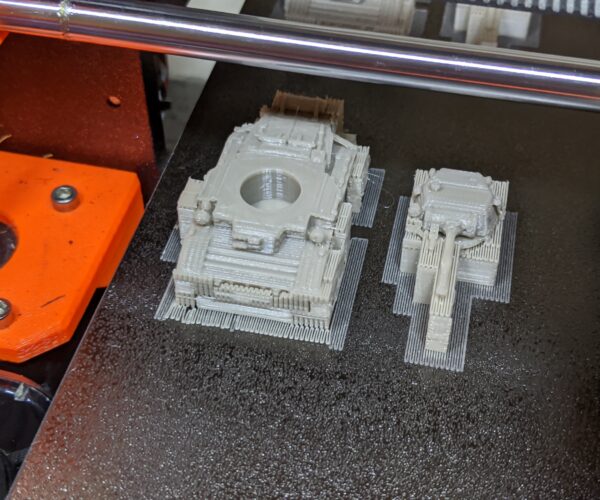PLA and moisture
There's often a lot of discussion about whether relative humidity is an issue when printing PLA. 99% of the time, I don't experience any issues, but I've had 2 situations where certain PLA under specific conditions will suddenly start stringing. This happened with a spool of PLA that was mounted for roughly a week:
I finally pulled the spool out and dried it out and it's back to normal:
PLA doesn't usually have problems with humidity, but it certainly can. I store in in a freezer ZipLoc bag with a fresh packet of desiccant just to be sure and don't hesitate to toss it back in the drier if I start to notice stringing. I wasted a lot of time early on chasing stringing settings only to finally appreciate the need to dry filament before making wholesale changes to my slicer settings.
RE: PLA and moisture
Useful info, thank you
RE: PLA and moisture
The first image looks like whole print is covered in spiderwebs. Maybe the filament uses some hygroscopic components, because this looks more like PETG or wood filament rather than PLA. But good to know, I have obtained dehydrator now. What's your experience with moisture of new filament spools? Is it in general dry, wet, or it varies? Do you toss it for drying just in case?
RE: PLA and moisture
I think there's a tendency to focus on "how much moisture is absorbed" versus "how much does relative humidity affect a print". I've seen big changes in stringing with PLA over the course of a few days depending on the weather (New England states). This Paramount PLA (no other fillers) has been the most reactive to changing conditions, starting out printing quite nicely, but finally just turned into that webbed mess you see in the first pic. I'm not sure if the stringing is caused by:
- The PLA absorbing moisture.
- Relative humidity in the air reacting with the printing process.
- Odd combinations of filament additives reacting unpredictably.
I do know that "when in doubt, dry it out" has served me well regardless of the specific cause.
RE: PLA and moisture
Bobstro:
Good info! This is a very illustrative post on the effects of humidity in 3d printing and is something everyone should keep in mind with regard to their geographic location and humidity levels when considering options to reduce stringing.
Being in a very high humidity area I can see the increase in stringing on multiple successive prints on the same day, unless it is one of the infrequent dryer winter days where I think the most I have gone is a couple of days. I found that if the relative humidity is less than 50% it is much better, but typically 80 - 100% relative humidity days are the norm. I am relying on weather apps and my small humidity indicators in and around the printer, so they are not scientific at all.
My default is to dry all filaments before printing unless it is a brand new sealed spool, and even that is not a guarantee with some of the lower quality filaments.
Strange women, laying in ponds, distributing swords, is hardly a basis for a system of governance!

